|
We are thrilled to host Justin Colón on our blog today! Read our interview with him below and check out this hilarious and fun picture book: KLiC: What was your inspiration for The Quacken? JC: To all who are reading this, please entertain me (and yourself) for just a moment and shout this in your most grandiose, Zeus-like voice: “RELEASE THE QUACKEN!” Go ahead, try it again! Fun, right? Now, imagine shouting that as hundreds of hungry ducks are headed somewhere on a mission. Apparently, some duck owners do exactly that when they release their ducks for feeding time. This hilarious pairing of dialogue and imagery is one I saw through a combination of random GIFS and Youtube videos I encountered while scouring the internet to ensure someone hadn’t already used this title and/or concept. Almost immediately, the ‘what ifs’ invaded my brain. What if the Quacken was a gigantic duck? What if someone unintentionally created or unleashed this beast? What if that beast wanted to eat them? And where could such an imposing creature go unnoticed? One thing was for certain: The Quacken was too good a title to pass up. How often do you get a portmanteau, funny-sounding letters, a fresh concept, and the lead character all rolled into a single, super catchy picture book title, and one that is only two words? The title practically sells itself. The incongruity of “RELEASE THE QUACKEN” being so foreboding and theatrical, only for a giant duck to appear quacks me up. Sadly, the actual phrase didn’t make it into the book. But I’ve got plans to work it into some fun promo. Maybe I’ll even have all the students shout it in unison during school events. Now that would be fun! KLiC: That would be fun! Please tell us about your writing process. How long did it take you to write and sell The Quacken? JC: The idea for The Quacken came to me in March of 2020. The manuscript went on submission to editors in March of 2021, two weeks after I signed with my agent. Six days on sub, we received word that The Quacken was heading to its first editorial meeting. Ultimately, two Editorial Directors, each at a different Big 5 publisher, requested changes via Revise and Resubmits (r&rs), and I spent my summer producing a combined total of 5 r&r’s for them. In mid-August, my agent and I decided to go on a mini submission round to a very select list of editors. Within a month, Kendra Levin, another Editorial Director, this time at a third Big 5 house (Simon & Schuster) emailed my agent, and my agent called me asking if I could take a call. I wrapped up my workout at the gym, raced home, and hopped on a Zoom call. About thirty minutes later, my editor emailed my agent saying she knew the timing was a bit inconvenient (it was the Friday before Labor Day weekend), but she was offering us a two-book deal. No r&r desired. I’d hardly call that “inconvenient.” KLiC: Definitely not inconvenient in this case! What are your favorite illustrations in the book? JC: Well, first I have to give a shoutout to illustrator, Pablo Pino, and Art Director Lucy Ruth Cummins—two super experienced picture book creators. They brought the spookiness, humor, and adventure to this story through fun, commercial visuals. It was important to me that I worked with a Latin creator on this story, which features a Latino protagonist. I want BIPOC creators to have the opportunity to work on all sorts of stories, and not just ones centered around their identity. This is why four out of five of my books are illustrated by BIPOC creators. I request illustrator and art consultation before accepting any offer, and I remain involved throughout the selection process and vocal about wanting to lift BIPOC voices. For this reason, it was especially rewarding that my team at Simon and Schuster honored my request and selected Pablo, who was on the wish list of illustrators I shared with them. Okay, back to the original question. One of my favorite scenes in the book is a play on the concept of birdwatching. It was a favorite of mine as I drafted the manuscript, and I love it even more with Pablo’s illustration. In it, the protagonist, Hector, has just escaped the Quacken, but now he’s alone in a quiet forest with this creature, and he senses its somewhere out there. Using a pair of binoculars, he searches for signs of the beast. Little does he know, the Quacken is staring right back at him with its own set of binoculars. It makes me laugh every time. Below is a screenshot of the manuscript with the art notes for the scene. Underneath it is the final spread as it appears in the book. I couldn’t be more pleased with it. The graphic novel-style panels, color scheme, expressions body language, props, etc.—Pablo nailed it.
KLiC: I love those illustrations! What’s the one thing you want kids to take away from your book? JC: Not to feed the ducks! (that’s actually a disclaimer at the beginning of the book). But seriously, there’s no big takeaway with this book. This story is fast-paced, lighthearted, and doesn’t take itself too seriously. And I’m content with that. Its life purpose is purely to provide entertainment. KLiC: Ha! Do you have any tips for pre-published authors? JC: Think about who you are as a creator, the type of work you want to create, the career you envision for yourself, your short and long-term goals, etc. Get specific, and then create a plan of action with SMART (Specific, Measurable, Achievable, Relevant, and Time-Bound) goals that will move you closer to your target. This will also help give you more control and fulfillment within your creative journey. That said, it’s okay to pivot throughout the process. We grow as people and creators. Our dreams evolve. And our goals and plans change. Publishing isn’t a sprint, it’s a marathon, one that requires persistence. You will likely receive many rejections. And sometimes it’s hard not to take them personally. They can start to weigh on you. But I promise, these rejections aren’t personal. There are plenty of reasons why an agent or editor might pass on your work, even if it’s a great story that is well-written. It’s possible they represent a creator/project that’s too similar. It might be a story within a genre and/or format that’s not their editorial strength. Maybe the market is challenging for that type of project at the moment. The list goes on and on. Rejection is redirection, and your journey will be filled with many redirections. In fact, the further along you get, the more abundant the redirections will become. This means you’re putting you and your work out there. You’re making choices and you’re taking chances. Otherwise, change wouldn’t be possible. Don’t be afraid to push back and advocate for yourself either. And remember, it only takes one yes. Also, while we’re working toward all these yeses, we can hone our craft and develop our skill set, read books and learn the market, connect with the community and celebrate others. But please, take breaks as you need. It’s important to refuel and reset. KLiC: Great tips. What’s next for you? JC: The Quacken publishes July 16th with Simon & Schuster BFYR. Three months later, on October 22nd, my sophomore picture book, Impossible Possums (illustrated by the brilliant James Rey Sanchez) publishes with Disney-Hyperion. It’s a hilarious, high-octane book starring a villainous possum with plans to take over the world. Then, The ZomBees (illustrated by Kaly Quarles) publishes with Simon and Schuster BFYR in Summer of 2025. It’s a spooky, rhyming picture book with light humor. That same year, Impossible Possum for Mayor (the sequel to Impossible Possums) publishes. My most recent book, Vampurr, which just sold at auction and is being illustrated by Lenny Wen, publishes with FSG/Macmillan summer of 2026. It’s an atmospheric, lyrical tale about a vampire kitten who struggles to find a loving home because of her hilariously unusual appearance and abilities. I’ve got several funny picture book manuscripts in the submission queue and am hoping to sell some nonfiction soon as well. I’ve also got a really spooky, action-packed middle grade novel in the works. KLiC: Wow so many amazing books! Is there anything else you want readers to know about you or your book(s)? JC: I offer freelance editorial services, mentor, and teach picture book writers of all levels through my small business, The Kidlit Hive. Whether you need a manuscript critique, assistance finding comp. titles, crafting pitches, etc. I’ve got you! To learn more, please visit kidlithive.com Justin Colón is a NY-based author whose forthcoming picture books include THE QUACKEN, IMPOSSIBLE POSSUMS, IMPOSSIBLE POSSUM FOR MAYOR, THE ZOMBEES, and VAMPURR. He is the owner of The Kidlit Hive and previously founded/hosted PBChat, a free community and annual mentorship program that assisted over 100 upcoming picture book creators on their publication journey. In his other life, Justin is a professional, formally trained voice and on-camera actor and SAG-AFTRA member who has co-starred on hit shows such as Unbreakable Kimmy Schmidt, Gotham, and Sneaky Pete. He invites you to visit him at justincolonbooks.com.
0 Comments
We are thrilled to interview Dr. Seema Yasmin for our blog today! Read below about her YA book, Unbecoming.
KLiC: What was your inspiration for Unbecoming? SY: Unbecoming is my debut novel which I started to write in 2019. It was inspired by the move to make abortion either impossible to access or outright unconstitutional. This was before Roe v. Wade was overturned in 2022, but of course, the writing was on the wall. My mind was traveling into the future to imagine what life is like for two Dallas teens trying to figure out friendship, faith and family when trying to get an abortion in a post-abortion world. Once I had that idea, the character of Laylah came to me in an instant and I could not get her out of my mind. She was earnest and hard-headed and getting in her own way in terms of letting friends and family in to give her the care and support she needed. Her bestie, Noor, then sprung alive and I could not get the two of them out of my head. It's wild to think the book is entering the world at the same time that the potential next president of the United States is talking about conducting surveillance on pregnant people to make sure pregnancies are not ended (something mentioned in the novel) and when Florida just banned abortions after six weeks. Wild. But even though some are calling the book prophetic, it was so clear in 2019 that this was where we were headed. This was my attempt at what writers do: working out our fears on paper. KLiC: Please tell us about your writing process. How long did it take you to write and sell Unbecoming? SY: When I began writing it in 2019, I was writing by hand into a notebook. I had no idea how to write a novel or if this one could be any good. I wrote about twenty thousand words and then I left it. Because I didn't know what to do. Then I scribbled down - in the same notebook - a list of my fears. Top of the list was that my agent, Lilly, would say it was terrible. So I shared the pages with Lilly, and she loved it. That was a relief, but I still didn't know how to write the damn thing! I left it alone and went on my way to an artist's retreat for Asian American writers with Kundiman. It was there, in workshops and deep conversations with veteran novelists, that I let myself dream about finishing the novel. When the icon Shawn Wong told me that he had sold his novel, American Knees, on pages (meaning he hadn't finished it), I thought "Ah ha!" That's what I need to do because then I'll have two things that I need: a deadline (I'm trained as a journalist), and an editor to help me craft the rest of the story. Around that the same time, Roe v. Wade was overturned and Lilly was asking where the novel was. "Your speculative dystopia is becoming our reality!" she said. I had just published my first YA non-fiction book in the fall of 2022, What the Fact?! Finding The Truth In All the Noise, so the novel - which felt urgent - was mentioned to the same team at Simon and Schuster. I'm told it's rare to sell a novel on pages, but Lilly is a magician and the team at Simon and Schuster are amazing. The deadline and invaluable editorial input made Unbecoming possible. KLiC: What’s next for you? SY: My debut short story collection is out just in time for Halloween. It's called Djinnology, and it's a haunted collection of spooky tales about mysterious creatures from the Muslim world. I'm excited about that entering the world, and I'm thrilled to continue touring with my debut picture book, The ABCs of Queer History, which came out in April. I'm also working on a couple of screenplays as I consider which project to dive into next. KLiC: Is there anything else you want readers to know about you or your book(s)? SY: I'm inspired by Toni Morrison when she said “If you find a book that you really want to read but it hasn't been written yet, then you must write it." Unbecoming, The ABCs of Queer History, Djinnology, all of my books essentially, are books that I wanted to read. I'm delighted that I get to play with words and tell these stories. And I'm intrigued for what's yet to come. Unbecoming releases July 9th. Pre-order here. Dr. Seema Yasmin is an Emmy-award winning journalist, author, medical doctor and professor. She trained in medicine at the University of Cambridge and in journalism at the University of Toronto. Rashmi Bismark talks with Meghana Narayan about her picture book, A LITTLE BIT OF EVERYTHING, illustrated by Michelle Carlos. RB: What was your inspiration for A Little Bit of Everything? MN: I am Indian American. My husband is bi-racial Chinese, and I knew that whatever way we brought children into our lives, our family would be inter-racial. How could I prepare them for this beautiful, unique life that they would have? So I started writing a love letter to my future child. I wanted to let my children know that they of course would have a bit of me, their mama, within them, and a bit of their papa. But they were also free to make their own path in this world. I wanted my children to know that while their home culture was incredibly important and I wanted them to hold tightly onto it, that they were so much more beyond that one facet of their identity. RB: Please tell us about your writing process. MN: I feel like I am still trying to find my rhythm as a writer. My schedule isn’t consistent; rather, it's fragmented throughout the day and week. My creative time comes to me in bursts! While I experience a lot of frustration and feel like I am moving at a glacial pace in my career, I made a deliberate choice to prioritize my time with my children. I try to lean into that and recognize this to be the season of inspiration. Stories are all around me as I’m surrounded by the boundless wonder of childhood! RB: What’s the one thing you want children to take away from your book? MN: What I hope readers will take away most is that they are made up of lots of little parts and bits. And that if they take time to collect all of those memories and lay them out, they will discover this beautiful map of identity. No two maps are alike. Amaya meets her younger sister in this story and she gives her the space to make her own path, to write her own story. RB: Do you have any tips for pre-published authors? MN: My biggest tip would be to find community. Share with the world that you are a children’s book creator. Once you start believing it and embracing this identity, you’ll find that connections with others can so easily be made. The writing community is incredibly supportive and generous. Lean on these creatives, seek their advice, and uplift their work. RB: Is there anything you want readers to know about you or your book(s)? MN: I try to write stories where the characters' cultural heritage is highlighted and they are proud of it, but it is only one part of their identity. They are free to try on new identities and change and take layers off. I feel like I was waiting for permission to do that as a young person, and I didn’t get it. Stories and media can offer that mirror, that affirmation, we are all craving. And I’m so glad that more and more children have that now. Meghana Narayan is the daughter of Indian immigrants. She graduated from Teachers College, Columbia University, has an MA in literacy, and taught in early childhood classrooms for over a decade. She is a mama of two girls and one rambunctious dog named Diggity. After stepping away from the classroom, she founded Teach for the Change, a platform where she shares her passion for creating more inclusive and diverse spaces and experiences for little ones. She is also a visual artist who creates alongside her daughters each day. Meghana lives in Maryland, where you can find her chasing her children through the garden and stuffing her pockets with all kinds of natural treasures! Connect with Meghana at: https://meghananarayan.com
Today we're delighted to feature KidLit in Color member Valerie Bolling who has co-written, I SEE COLOR, with Kailei Pew. The book is filled with beautiful illustrations by Laylie Frazier. KLiC: Please tell us about your writing process. How long did it take you to write and sell this book? VB: My co-author, Kailei Pew, reached out to me in January 2021 with an idea for this book and asked if I’d be interested in writing it with her. I said yes, and I’m so glad I did. We drafted and revised the book and submitted it to our agents, James McGowan and Emily Forney of BookEnds Literary Agency, within a month, and they got edits back to us within a few weeks. Our agents felt the manuscript was ready to be sent out, but we wanted to check in with some friends who could provide sensitivity reads. We eventually felt the manuscript was ready to be sent out in April. The day after James and Emily sent out the manuscript, Luana Horry, an editor at Harper Collins, expressed interest. She took I SEE COLOR to Acquisitions in May, and we received an offer after that meeting. So, it took four months from writing the first draft to selling the story, which we know was quite fast. Keep in mind that this occurred in 2021; three years later, the publishing industry is moving at a slower pace. KLiC: What’s the one thing you want children to take away from your book? VB: I want children to learn about all of the important changemakers in this book. I want them to be inspired to learn more about these remarkable individuals as well as to learn about many other heroic people who aren’t featured in this book. Most importantly, I hope they’ll find ways to take action in their own communities and make positive contributions in our society, always leading with a commitment to equity and a heart for empathy. KLiC: Is there anything you want readers to know about you or your book(s)? VB: People who have supported my author journey thus far will recognize that I SEE COLOR is quite different from my previously published books. My other books are written in sparse, rhyming text and geared toward very young readers. I SEE COLOR is lyrical, but doesn’t rhyme, and is for older children. It’s also my first nonfiction book and my first co-authored book. Collaborating with Kailei throughout the process of bringing this book to life has been a blessing and gift because we moved from being co-authors to becoming close friends. Authors cannot be successful on their own. Our readers/supporters truly matter. Therefore, I appreciate you requesting my books at your local library, writing book reviews, and amplifying my books and myself on social media. Thank you so much! Valerie Bolling is passionate about creating stories in which all children can see themselves and feel seen and heard, valued and validated. She is the author of six picture books: LET’S DANCE! (SCBWI Crystal Kite Award winner), TOGETHER WE RIDE, TOGETHER WE SWIM (2023 Kirkus Prize Finalist), RIDE, ROLL, RUN: TIME FOR FUN!, BING, BOP, BAM: TIME TO JAM!, and I SEE COLOR (a Junior Library Guild Gold Standard Selection). She also wrote RAINBOW DAYS, a Scholastic Acorn early reader series.
A graduate of Tufts University and Teachers College, Columbia University, Valerie has been an educator for 30 years and is an active member of the kidlit community – teaching picture book classes (independently and for the Highlights Foundation), serving as a mentor, and presenting at conferences. Valerie lives in Connecticut with her husband where they enjoy traveling, hiking, reading, going to the theater, and dancing. Learn about Valerie: linktr.ee/ValerieBolling Author Visit Information Essay by Sonja Thomas: Dreams, Nightmares, and Magic Dreams What do you want to be when you grow up? My answer was never the same. A backup singer like Wendy and Lisa in Prince’s the Revolution. A cartoonist for The Simpsons. A writer like Judy Blume. A dancer, a photographer, a Broadway actor . . . The main character in my new book, OLIVE BLACKWOOD TAKES ACTION!, dreams of directing award-winning movies, just like her dad did before he passed. Eager to apply to an elite summer film camp, Olive’s excited when her film teacher promises a personal recommendation to the winner of the class project. Nightmares In college, I was too afraid to pursue anything creative. So, I became an accountant instead. Eventually, I rediscovered my love of writing. But I was tormented with depression and anxiety. I wrote. I was rejected. I cried. A lot. After a decade, I sold a short story. Then several more. And soon my first novel. What if no one reads it? If they do, I’m sure they’ll hate it. My fear ballooned. Unlike her dad, Olive’s anxiety has her avoiding the spotlight. Staying behind the camera is much easier than having to interact with people. Speaking in front of an audience makes it hard to breathe. She’s plagued with catastrophic thoughts, nausea, sweating while shivering, and diarrhea attacks. Sometimes the fear’s so crippling, she stays in bed. Or it knocks her out with a panic attack. Olive and I share all these anxiety symptoms. Magic Olive and her best friend Kayla started their Book of Enchantment in the third grade and filled it with spells. They do their best to follow the rules of magic. Like life, magic is a mirror of what you believe. It’s stronger when done together and the possibilities are infinite. Magic is a verb. It only happens when you take action, unfolding in its own time and way. Olive and I live with anxiety, but it doesn’t define who we are. Family and friends make us stronger, reminding us that we’re never alone. That strength helps move us toward our dreams, one step at a time. We can’t control other people’s actions or the stuff that life throws at us. So, we try not to take it personally. Instead, we create boundaries, trust our gut, and open to all the possibilities. Magic is make believe. Our belief in ourselves is the most powerful magic there is. A silly introvert ruled by coffee and cats, Sonja Thomas (she/her) writes stories for kids of all ages. Her debut middle grade novel, SIR FIG NEWTON AND THE SCIENCE OF PERSISTENCE, is an Oregon Book Award finalist, an Oregon Spirit Book Award Honor recipient, and a Washington State Book Award finalist. She’s also a contributing author for GOOD NIGHT STORIES FOR REBEL GIRLS: 100 REAL-LIFE TALES OF BLACK GIRL MAGIC. Her second novel OLIVE BLACKWOOD TAKES ACTION! received “Two thumbs up for this necessary novel about anxiety and self-advocacy” from Kirkus Reviews. www.bysonjathomas.com
We are thrilled to host Desmond Hall on our blog today. Read our interview with him below:
We are so honored to host award-winning author Janice Lynn Mather's essay on our blog today. Read her powerful essay below:
Memory 1: I am 17, and bothered. I’m bothered by crime rates. Bothered by the frequency of motorcycle fatalities. Bothered by how often father-aged men hit on me. Now I’m sitting in the upper bleachers of an auditorium filled with students, flanked by two writer friends. We’ve all entered the awkwardly titled I’m Okay, You’re Okay! poetry competition. I eagerly listen for my name, equally hopeful for a win and certain that the judges won’t appreciate my scathing verse, penned in outrage at the condescendingly optimistic theme. Spoiler alert: I did not win. Though scathing correction is never my goal anymore, I still write the tough stuff. My teen characters live through sexual assault, through abandonment, family struggles, grief, loss, simply because teens actually do live through these things. Humans are beautiful and amazing. We are resilient, even when we shouldn’t have to be. You are beautiful and amazing. You are resilient, even when you shouldn’t have to be. But if our stories of strength and survival are told with what feels like one-sided heaviness, it can be hard for others to listen. Memory 2: The message pops up and my heart is in my mouth. The agent who asked to see my full manuscript! This could be the moment where my writing path, my whole life, changes for the best. I see afraid and not quite the right fit and my dreams crash down faster than I can slam my laptop closed, but not before I also glimpse a comment that my main character’s situation feels unrelentingly bleak. I plumet into a funk of discouraged indignation. How dare she? Did she even read the whole thing? When my initial horror wore off, I read and reread that agent’s handful of actually quite thoughtful feedback, and set about reworking Learning to Breathe, my first novel, looking for chances for my main character, Indy, to feel hope. To even feel joy. So when I write about Karmen, scouring her home and her community for any shred of information about her brother’s life that might help her understand his death, I thought unrelentingly bleak. And then I let her breathe a little bit. This is why Karmen hurtles down the street on Julian’s reclaimed skateboard. Why she pauses to enjoy the guava French toast her dad treats her to, one morning. Why she lets a roll of soft yarn linger in her hands as she curls up to finger-knit with her best friend. Why she sinks into love with Isaiah. All while she’s reeling from her brother’s death. It’s important to keep resilience, hope, possibility, within reach. Important for it to feel real that joy exists. Important to know that, even if you’re mired in grief, or loss, or struggle—and we all have a moment, a season, of feeling that way—there can still be moments where it relents. Where you feel wind on your face and something sweet in your mouth. Where someone holds you like you’re the world’s greatest treasure. Where you, like Karmen, feel like you can carry on. Like you can even have snippets of joy. Janice Lynn Mather Read more about Where Was Goodbye here: https://www.simonandschuster.com/books/Where-Was-Goodbye/Janice-Lynn-Mather/9781665903950 Janice Lynn Mather is a Bahamian Canadian author. Her first novel, Learning to Breathe, was a Governor General’s Award finalist, a Sheila A. Egoff Children’s Literature Prize finalist, shortlisted for the Amy Mathers Teen Book Award, an ALA/YALSA Best Fiction for Young Adults selection, an Amelia Bloomer Book List pick, and a Junior Library Guild Selection. Her second novel, Facing the Sun, was an Amy Mathers Teen Book Award winner. Where Was Goodbye? is her third novel for teens. Janice Lynn lives in Vancouver, British Columbia. Today we feature Lisa D. Brathwaite and her new picture book, Miles of Style: Eunice Johnson and the Ebony Fashion Fair, illustrations by Lynn Gaines. KLiC: What was your inspiration for Miles of Style: Eunice Johnson and the Ebony Fashion Fair? LB: My Ebony magazine-impressed childhood, an enchanting museum exhibition about the Ebony Fashion Fair and a first grade fashionista named Kellie who was looking for a Black history book to captivate her inspired me to research and chronicle the stylish life and legacy of Eunice W. Johnson. KLiC: Please tell us about your writing process. What kind of research did you do for your book? How long did it take you to write and sell this book? LB: I started broad research in January 2015. Google Books was a helpful online resource. I gathered a goldmine of information by searching its scanned Ebony magazine issues from the era of my focus. I love research and the more I did, the more deeply I got enamored. That September I learned about the call for submissions from Lee and Low Books for their New Voices Award and decided to get serious about writing. I asked my director for a week off from my job to buckle down and write the original manuscript that evolved into Miles of Style. In that week, bookended by two weekends and three additional nights of prep and polishing, it was done and off to the post office. After receiving word that December I’d won the award and publishing deal, I leaned into more focused research with the refining that comes in the revision process. That led me to inquiries, connections, personal interviews and travel for which I’ll forever be grateful. KLiC: What are your favorite illustrations in the book? LB: Whew! That’s a tough question, as I love Lynn’s work throughout. The spread with the models majestically coming down the runway depicting the start of the Ebony Fashion Fair “Americana” tour is one of them. I also love Mrs. Johnson at the Parisian fashion house entrance, meeting the resistance of a gatekeeper with resilience and an “Admit One” ticket. She knew as a Black woman once she gained entry, she’d make room and space for others. Finally, I adore the spread with the little girls and their mothers, grandmothers and aunties at the last stop of the tour. There’s a girl in a lilac shirt dress posing with her hand on her hip like an Ebony Fashion Fair model. Lynn had no way of knowing, but this is how I posed and pretended when I was a girl thumbing through the pages of Ebony magazine, so I see Little Lisa in this illustration. I hope children see themselves represented in her beaming beauty too as they go through the book. KLiC: Do you have any tips for pre-published authors? LB: Join a writers community specific to the genre of your current project and if you’re able, another without a direct correlation, for a slightly different craft influence. Related, go to the movies. Go see live theatre. Go to an art gallery opening. Put yourself in position to absorb storytelling through varying disciplines. Surprising ideas or inspiration may emerge to augment your writing approach. Lastly, ask yourself, “If I had to yield 10 years of my life to bringing this writing project to fruition, would I do it?” If the answer is “No”, choose another subject/topic. You have to love it. Mine took nine years from ideation to publication. It was a road with a lot of curves. I’d still say “Yes”. KLIC: Is there anything you want readers to know about you or your book? LB: Time and again I’ve heard adults say “I was familiar with Ebony magazine, but I had no idea about the Ebony Fashion Fair or Eunice Johnson.” I welcome anyone to learn alongside young readers, and let the discovery spark a self-styled, intergenerational conversation. It’s my humble honor to provide Miles of Style as the vehicle. Lisa D. Brathwaite is a purveyor of creative self-expression. She loves playing dress-up
(still!), her family, finding herself in art spaces, and writing whatever suits her in a given moment. Miles of Style: Eunice W. Johnson and the EBONY Fashion Fair is her debut children's book. Lisa studied family and community development at the University of Maryland at College Park, graduating with a degree in Community Studies and a concentration in public policy and the Black community. She is a New Jersey native and has been designing her adult life in Atlanta, GA. Find out more at lisadbrathwaite.com To learn more about Lisa, please visit: Website: https://www.lisadbrathwaite.com/ Instagram: https://www.instagram.com/lisa_d_brat/ Twitter/X: https://twitter.com/lisabrathwaite We are proud to feature member Valerie Bolling on the blog today! Valerie shares her latest early reader book, RAINBOW DAYS: THE ORANGE WALL, illustrated by Kai Robinson. KLiC: What was your inspiration for RAINBOW DAYS: THE ORANGE WALL? VB: I wanted to write a Scholastic Acorn series and needed to come up with an idea that would interest young readers – a book that they’d be excited to read on their own. Since most children enjoy being creative and adore animals, I decided to write about a girl and her pup who enjoy making art together. Once I decided on my characters I had to choose their names. Zoya’s name is a combination of my nieces’ names, Zorah and Anyah. My younger niece, Anyah, loves art, so she’s part of the inspiration for art-loving Zoya. I pictured a brown dog, so Coco seemed like a good name for a pet-friend. (There’s no “a” at the end of Coco’s name because it needs to be spelled in an accessible way for early-readers, which is also why there’s no “h” at the end of Zoya’s name, even though my nieces’ names end with an “h.”) KLiC: What’s the one thing you want children to take away from your book? VB: I want children to make art! Perhaps, if they’re fortunate enough to have their own bedroom, like Zoya, they may choose to give it a makeover, or do something on a smaller scale, such as decorate a notebook, t-shirt, or dessert. All children should see themselves as artists, knowing that with their imagination and some paint, markers, frosting, or whatever they’d like, they can make something fabulous! KLiC: What’s next for you? VB: On June 4, my co-author, Kailei Pew, and I are excited to welcome I SEE COLOR, into the book world. This book is illustrated by Laylie Frazier, edited by Luana Horry, and published by Harper Kids. We’re honored that it has been selected as a Junior Library Guild Gold Standard Selection and has received a starred review from Kirkus. If you subscribe to the KidLit in Color blog, you’ll have the opportunity to read an upcoming post about our book. In the meantime, feel free to find out more about this book here. Valerie Bolling is passionate about creating stories in which all children can see themselves and feel seen and heard, valued and validated. She is the author of six picture books: LET’S DANCE! (SCBWI Crystal Kite Award winner), TOGETHER WE RIDE, TOGETHER WE SWIM (2023 Kirkus Prize Finalist), RIDE, ROLL, RUN: TIME FOR FUN!, BING, BOP, BAM: TIME TO JAM!, and I SEE COLOR (a Junior Library Guild Gold Standard Selection). She also wrote RAINBOW DAYS, a Scholastic Acorn early reader series.
A graduate of Tufts University and Teachers College, Columbia University, Valerie has been an educator for 30 years and is an active member of the kidlit community – teaching picture book classes (independently and for the Highlights Foundation), serving as a mentor, and presenting at conferences. Valerie lives in Connecticut with her husband where they enjoy traveling, hiking, reading, going to the theater, and dancing. Learn more about Valerie: Website: valeriebolling.com Twitter: twitter.com/valerie_bolling Instagram: instagram.com/valeriebollingauthor Facebook: facebook.com/ValerieBollingAuthor Author Visit Information We're excited to welcome Brentom Jackson to the KLiC blog just in time for Easter. KLiC: What was your inspiration for Elijah’s Easter Suit? BJ: I wanted a character name that represented the human capacity for boldness, innovation, and inventiveness. Elijah McCoy, the engineer and inventor for whom the term “the real McCoy” was coined, came to mind. Applying that attitude to fashion design spurred the idea of “Elijah’s Easter Suit.” KLiC: What are your favorite illustrations by Emmanuel Boateng? BJ: I love the illustration spread on pages 15-16. Elijah connects with his ancestors after discovering a box of old clothing in the closet. This is such a powerful depiction of “Sankofa,” looking at our past so that we may move forward. KLiC: What’s the one thing you want children to take away from your book? BJ: If you don’t see the things you want in the world (e.g., clothing, shoes, books, movies, games) go out and make them. KLiC: Do you have any tips for pre-published authors? BJ: Focus on deepening your connections in the writing community and developing craft. The rest will come in time. KLiC: What’s next for you? BJ: Deepening my connections in the writing community and continuing to develop my craft. Brentom Jackson is an award-winning spoken-word artist, classically trained actor, and licensed psychotherapist practicing in Dallas-Fort Worth, TX. With poetic voice, theatrical flair, and socio-emotional expertise Brentom writes stories that explore the universal lessons within Black-American history and heritage. With the hope of inspiring readers from all communities to celebrate their culture and cultivate their creativity.
Elijah’s Easter Suit is published by Random House Children's Books/January 23, 2024 |
Archives
July 2024
Categories
All
|














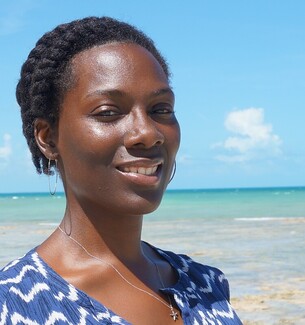
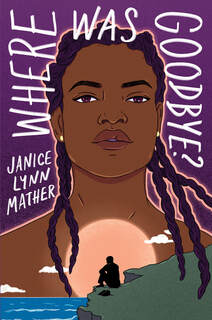
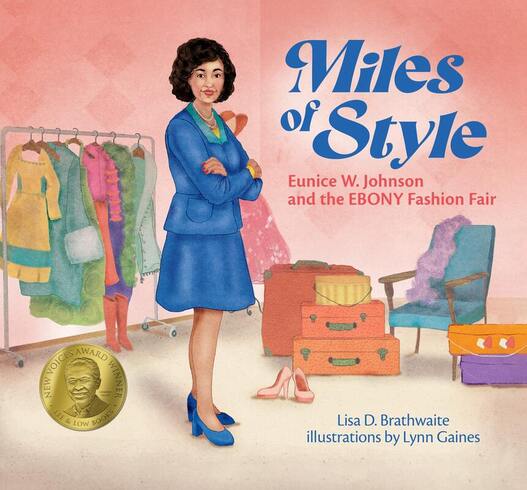
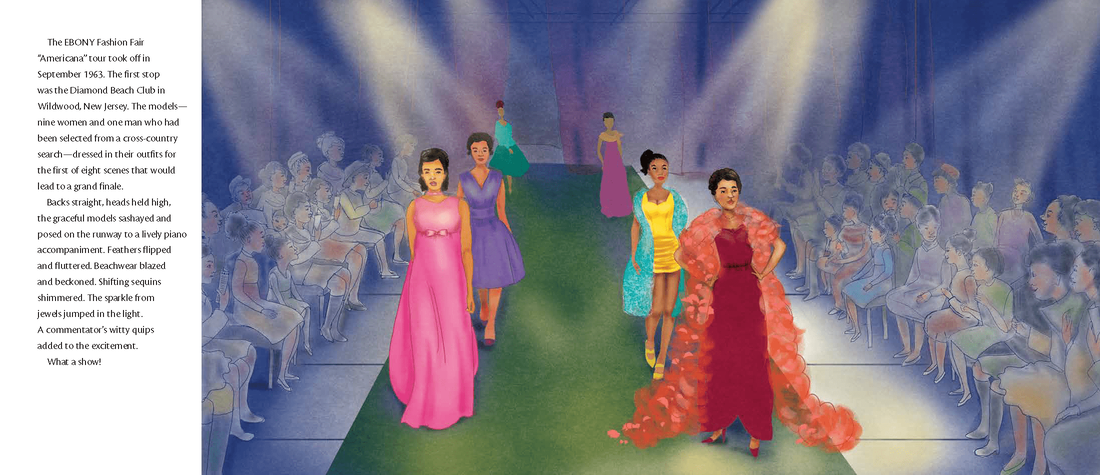

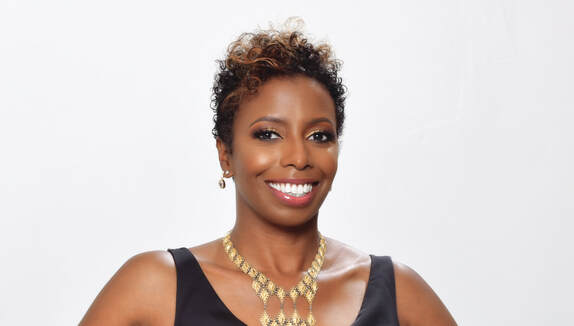
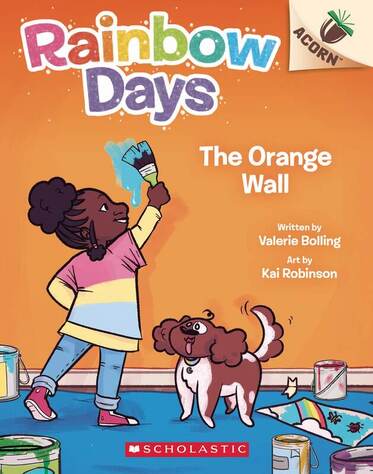
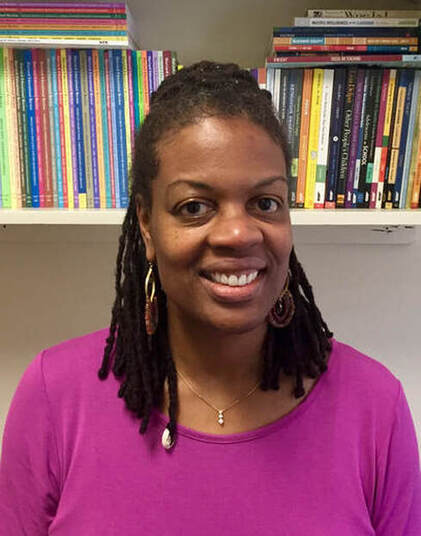
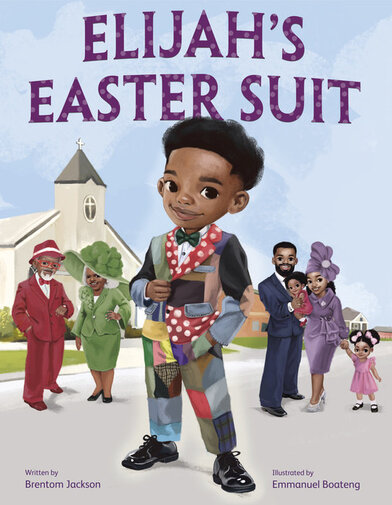
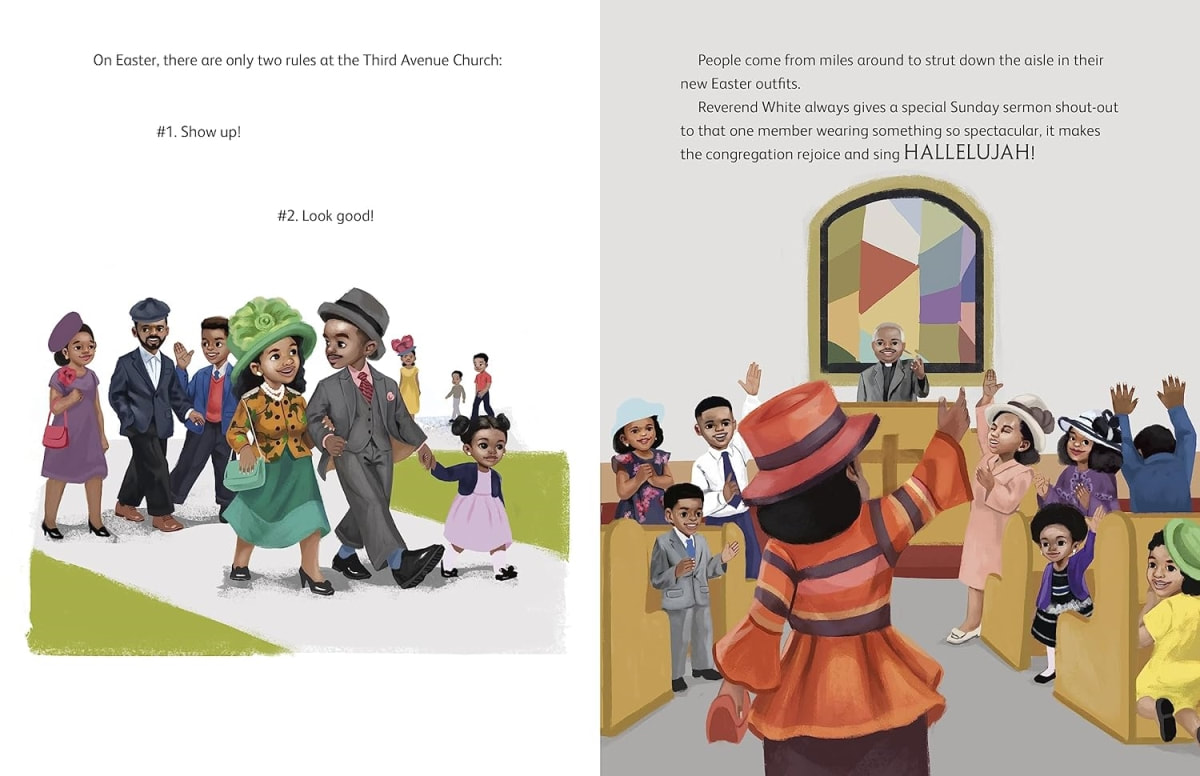


 RSS Feed
RSS Feed



